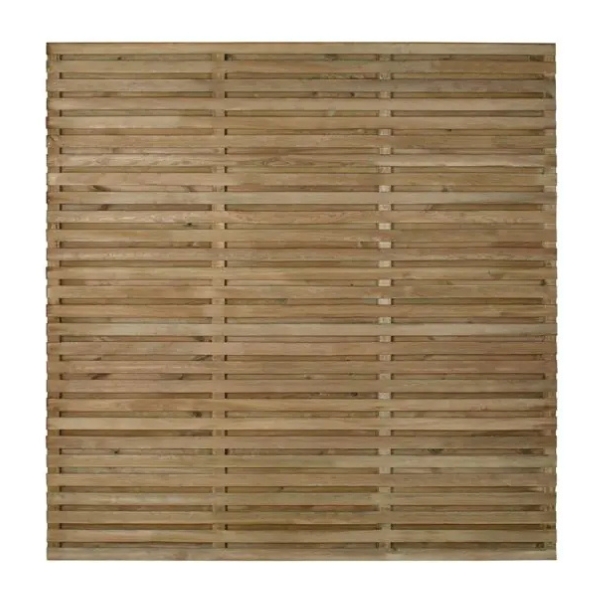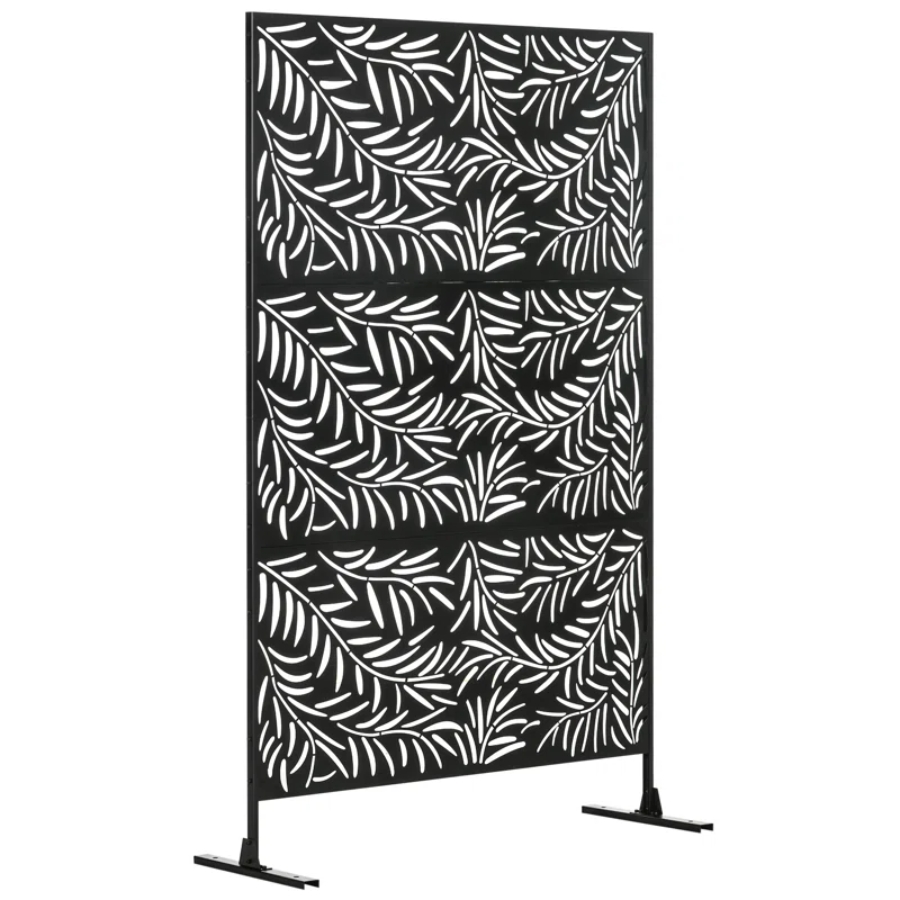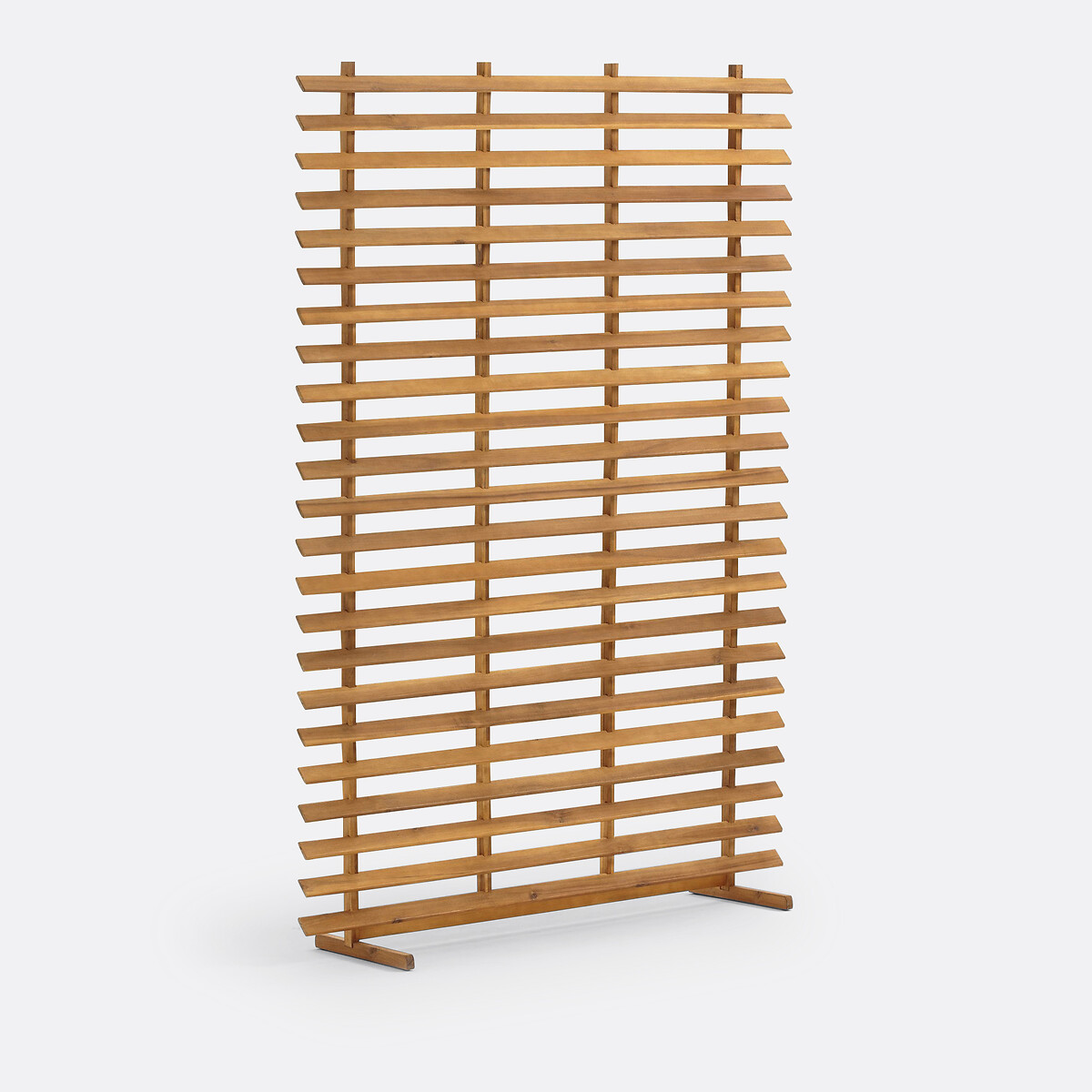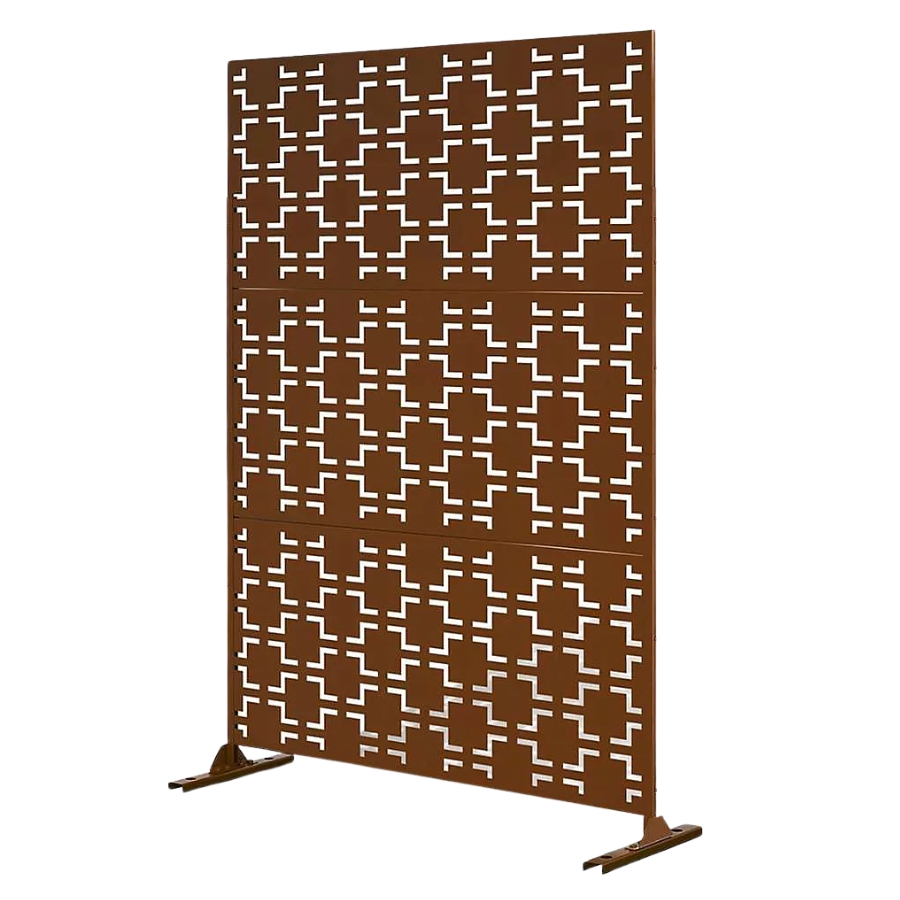10 Garden Screening Ideas That Will Create Boundaries, Hide Eyesores, and Give You All the Privacy You Could Wish for
Whether you want privacy, different zones or a pretty property boundary, discover some attractive screening ideas that garden designers and landscapers suggest
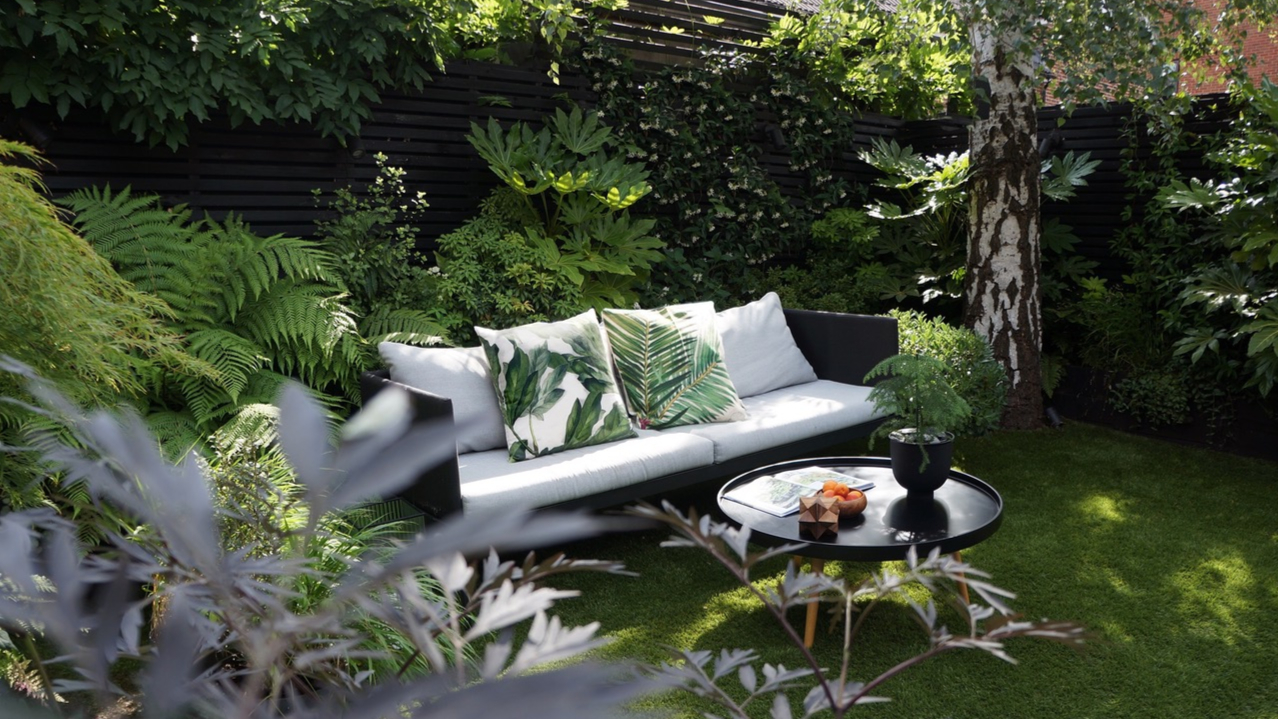
Garden screening ideas are often about creating privacy and avoiding being overlooked by neighbors. And while that is an important aspect, they can be used for so much more.
As well as providing privacy within your modern garden ideas, screens can also delineate different areas, hide the more practical parts of your yard and create visual trickery.
Whether you choose hardscaping materials, such as fencing and panels, or soft, such as trees and plantings–or a mixture, there is scope to use garden screening in ways that are both practical and visually pleasing.
1. Choose a Slatted Wood Fence With Breathable Planting
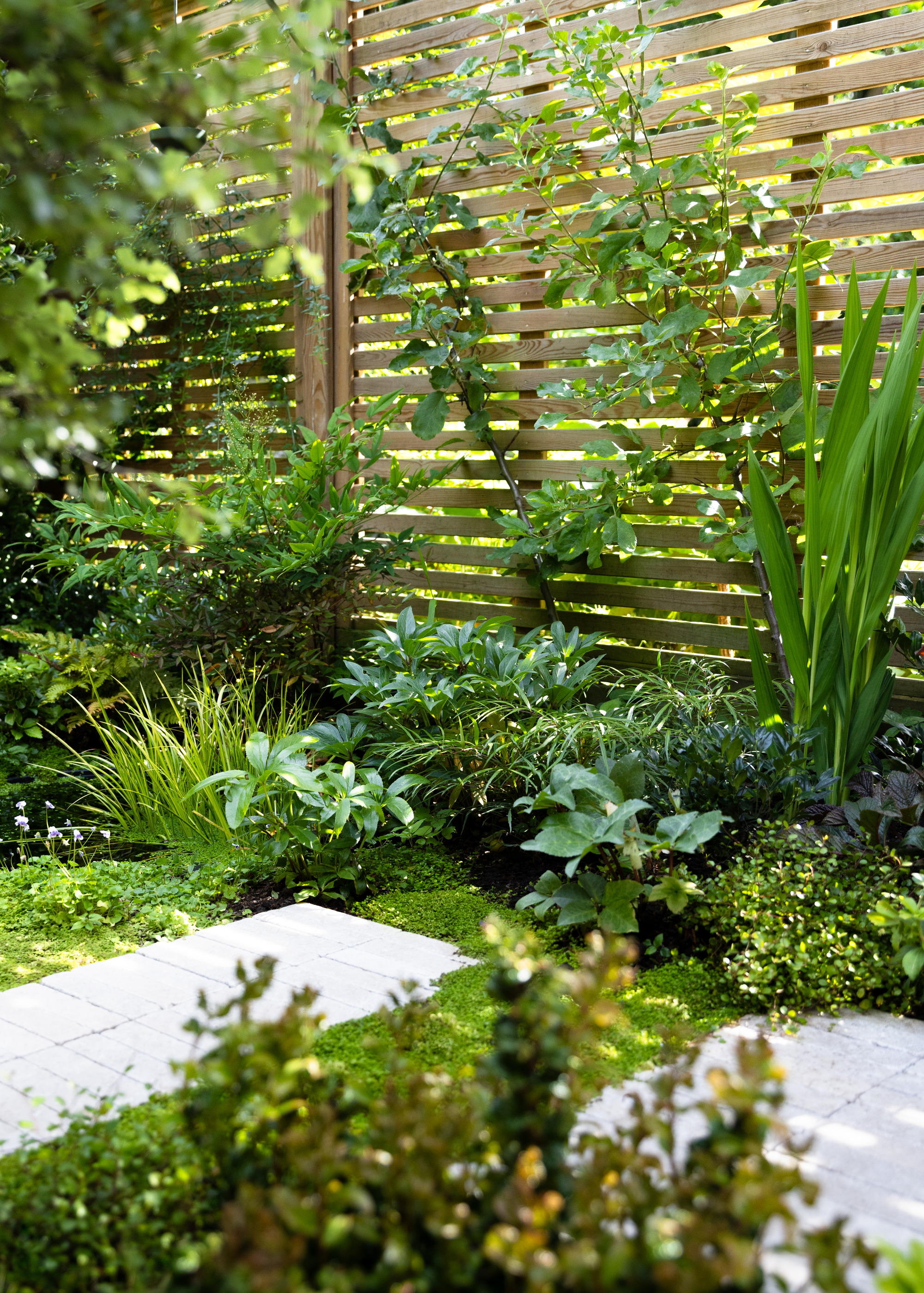
A fence is a traditional way to screen off your garden, however, there are numerous modern styles on offer, from total privacy fence ideas to partial-privacy. Choosing panels with narrow, flat, horizontal slats and thin gaps will give your garden a fresh modern feel and it can act as a frame for your plantings.
"A horizontal slatted fence is the perfect solution for those seeking privacy without sacrificing style," says garden designer, Gina Taylor, founder, East London Garden Design. "The clean, linear design feels light and contemporary, especially when crafted from soft-toned woods like cedar, larch, or thermally treated ash.
"Although, the magic really happens when you pair this style of fencing with naturalistic planting. Tall, swaying grasses like miscanthus or pennisetum add height, movement, and a sense of softness.
"Leave small gaps between slats to allow light and air to filter through — it keeps the garden feeling open and breezy, even within a defined boundary."
The Livingetc newsletters are your inside source for what’s shaping interiors now - and what’s next. Discover trend forecasts, smart style ideas, and curated shopping inspiration that brings design to life. Subscribe today and stay ahead of the curve.
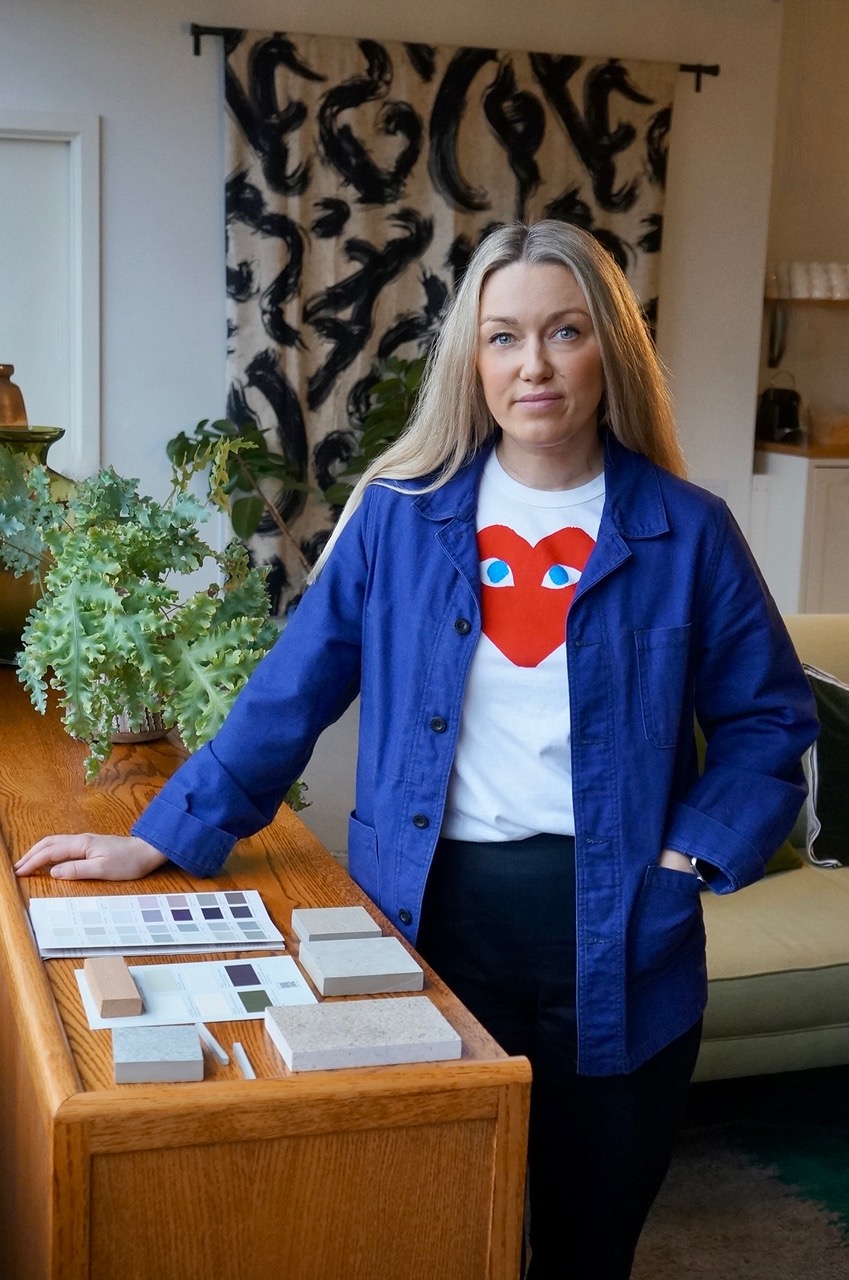
Gina Taylor is the founder and lead designer of East London Garden Design, a studio specialising in contemporary urban gardens, courtyards, and rooftops. Based in East London, Gina is passionate about creating outdoor spaces that feel like a true extension of the home — places that are welcoming, personal, and connected to their surroundings.
2. Pick Edibles for Boundary Planting
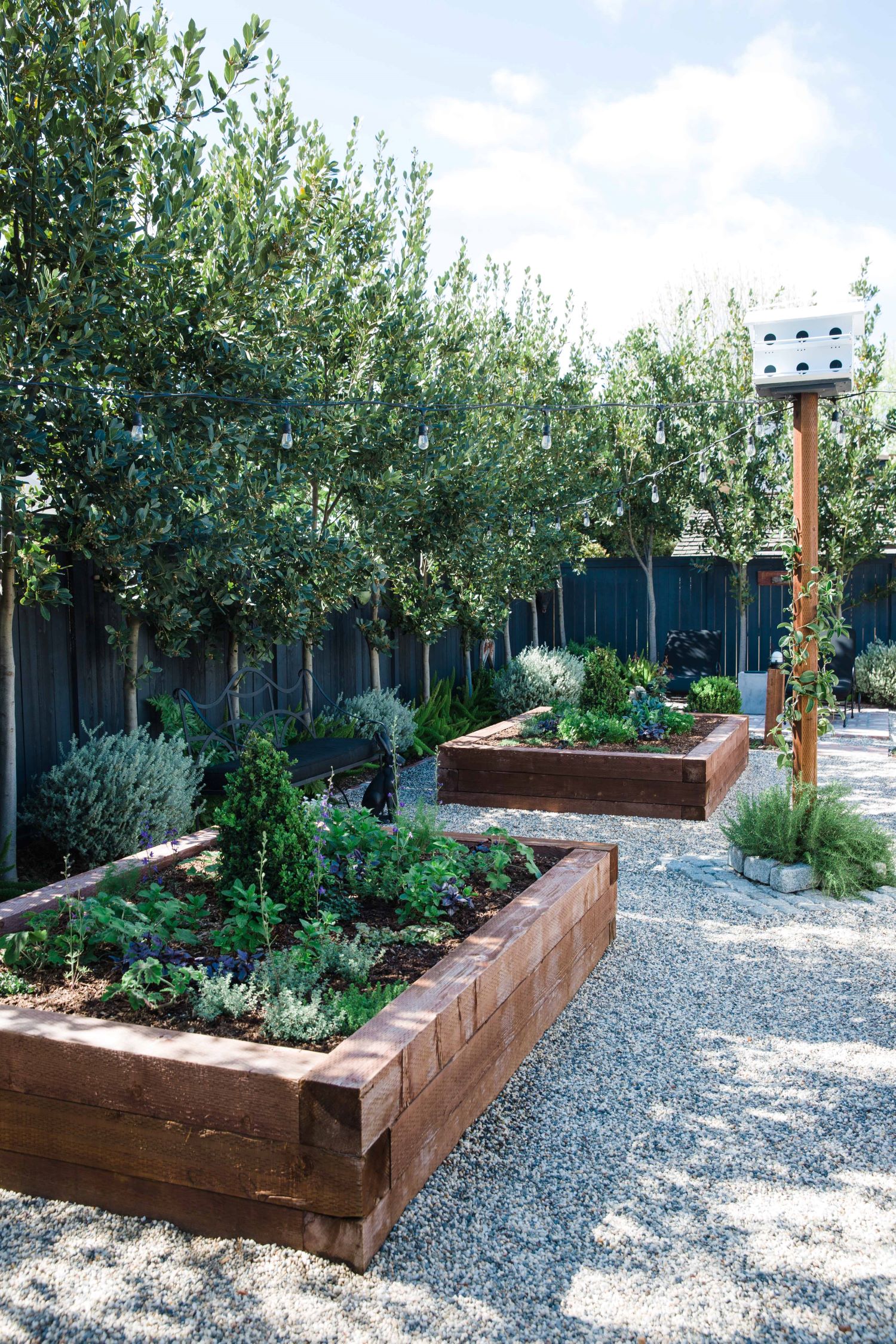
There is a natural tendency to grow pretty fast-growing climbing plants for privacy over fences, or trees, such as conifers to act as green screens in the garden. However, there is no reason not to plant edibles or edimentals instead. These plants can be as attractive, with the added benefit of providing home-grown food.
"For a clever, edible twist, consider training espalier fruit trees — such as apples, pears, or even figs — against a slatted timber fence," says Gina. "Their artful, flattened shapes align perfectly with the fence’s linear look, offering seasonal interest, fragrant blossoms in spring, and delicious harvests in late summer.
"The result is a layered, living screen that’s both beautiful and bountiful — blurring the edges between the hard structure and softness of nature."
3. Install a Living Wall
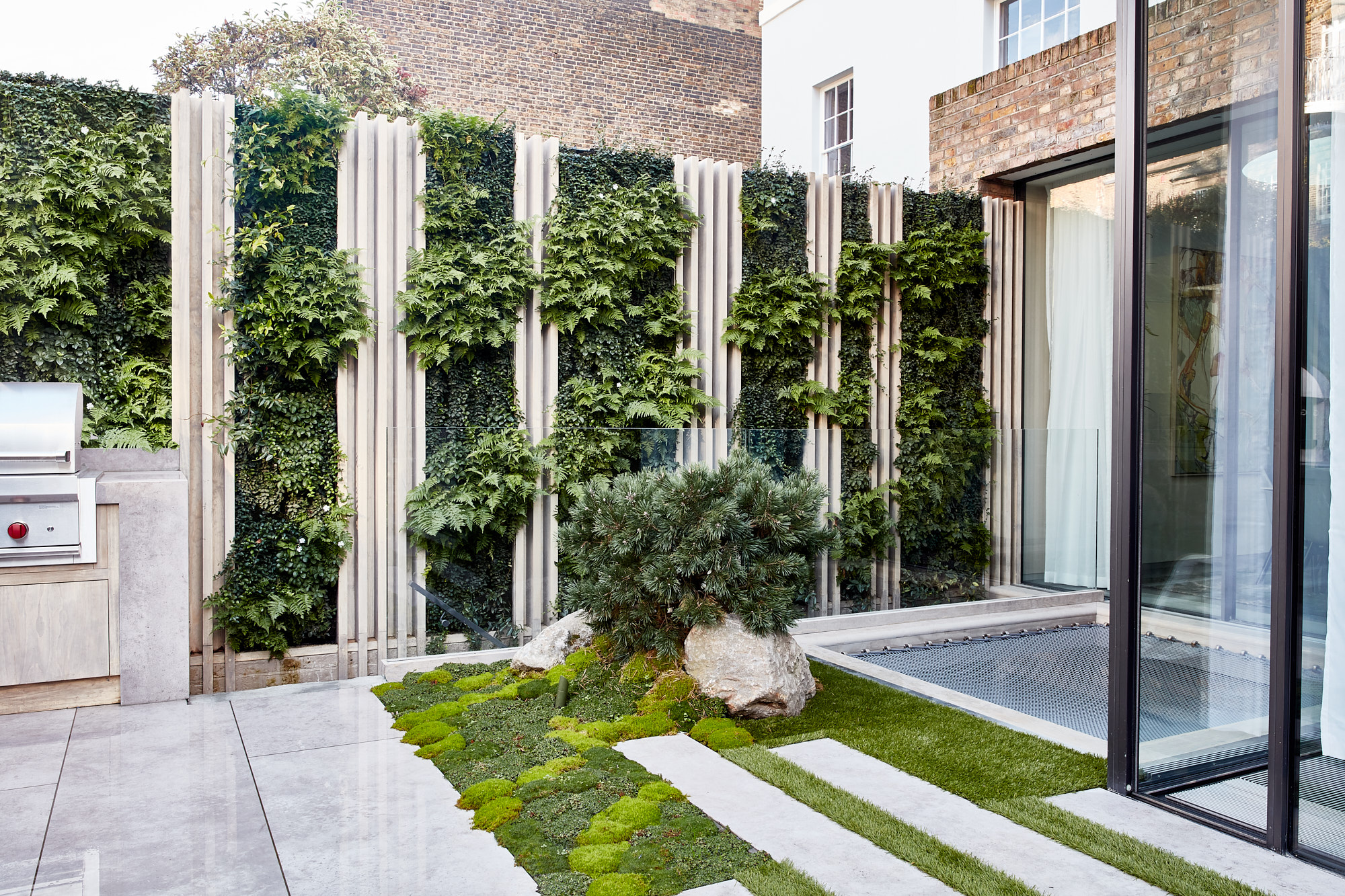
A vertical garden or living wall is a great way to create a green screen in a small outdoor space. These differ from training climbing plants over walls, as depending on which system you choose, you can grow multiple plants at different heights. Fitting a living wall near an outdoor kitchen is a convenient spot to grow herbs and certain types of fruit and veg, such as trailing tomatoes or berries.
"Living walls — also known as green walls — are a transformative way to create privacy while adding stunning visual impact," says Gina. "Modular systems are readily available, allowing you to easily build a lush, leafy backdrop even against an existing fence or bare wall.
"Plant a mixture of plants suitable for your sun orientation. A mix of ferns, Heucheras, Pachysandra, or Vinca for shady walls. Or succulents and trailing herbs like thyme or oregano and strawberries for a textural, ever-changing canvas on a sunny wall.
"A vertical garden doesn’t just shield you from prying eyes; it also acts as a natural sound buffer and cools the surrounding space, making it perfect for urban courtyards or small terraces."
4. Plant a Single Tree in a Corner
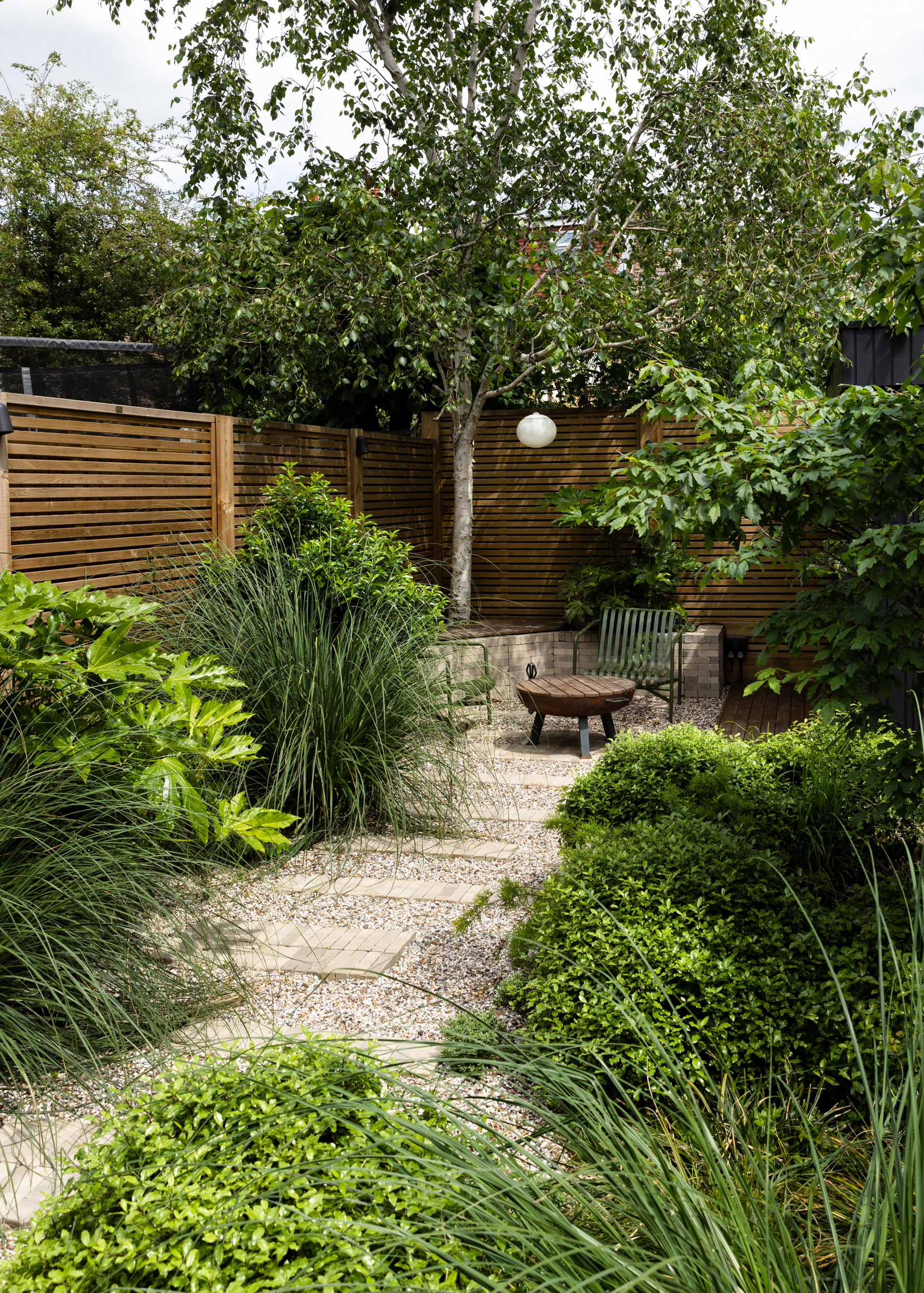
There are a multitude of screening ideas that may suit different parts of a modern garden. One of the most natural and obvious is a tree. If your garden isn't already blessed with a mature tree or two, you can plant a sapling in an overlooked area and wait for it to grow. Alternatively, plant a large specimen that is suitable for your soil type and conditions.
Consider the best trees for small gardens if you live in an urban area and don't want your tree to grow too tall.
"When deciding where and what type of screen to install, first have a look around your garden," advises Manoj Malde, garden designer and author of Your Outdoor Room. "Think about where you want to sit and what currently overlooks the area before making your choices.
"Trees provide natural architecture and screening in a garden, delivering height, impact and privacy - and you may need only one, placed strategically, to block the view from a neighbouring window. Trees also help to absorb pollution."

Manoj Malde is an award-winning garden designer, TV gardener and author of Your Outdoor Room. He is also an RHS show judge, RHS ambassador and Chelsea Flower Show medalist. Manoj is highly skilled at combining colours and textures with planting schemes and attributes his love of colour to his Indian ancestry as well as his background in the fashion industry.
5. Create Interest With an Installation
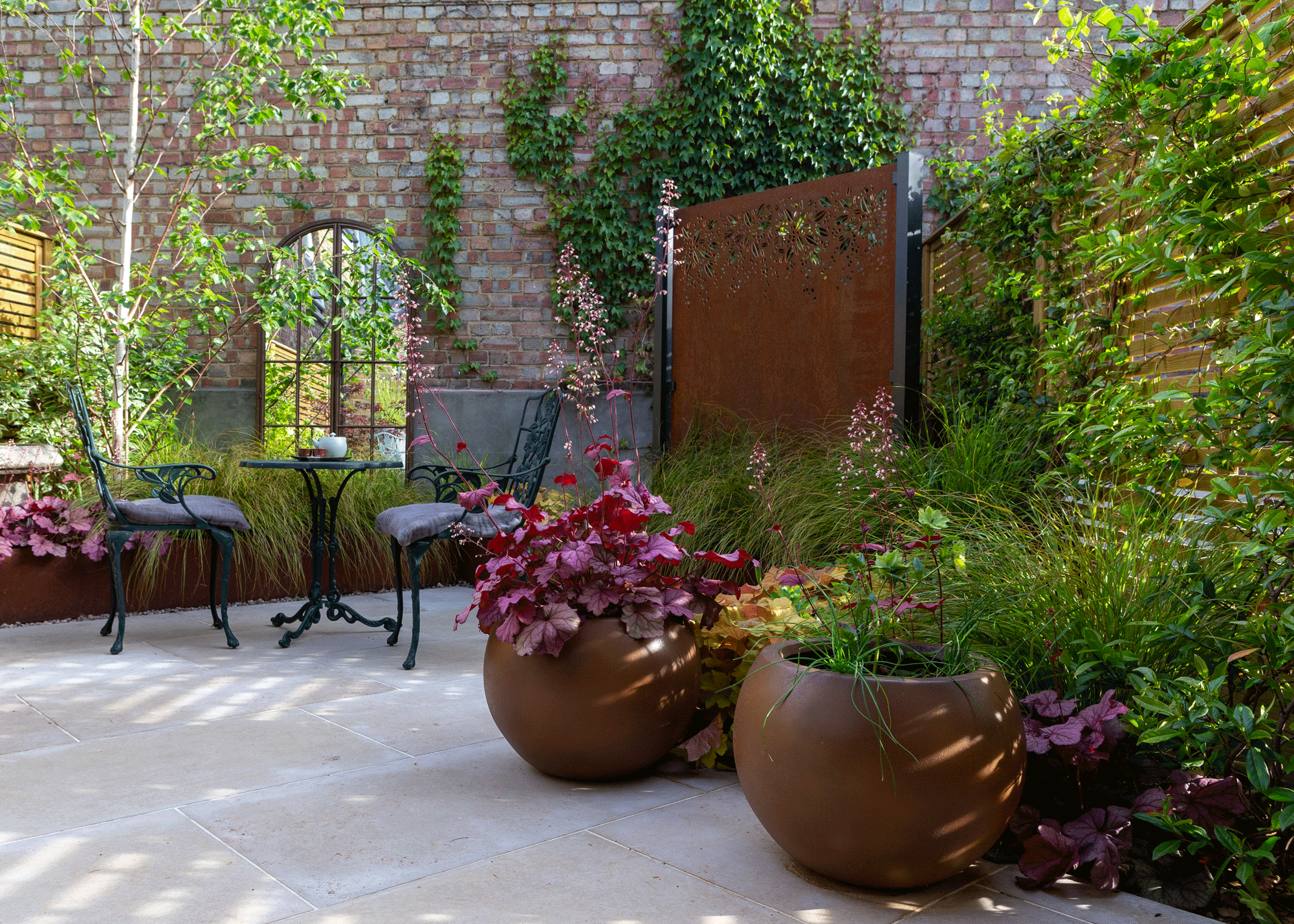
Metal garden screens can be used to add aesthetic interest, as well as hide any bits you don't want seen (such as the bins). Installing a laser-cut metal screen makes for an attractive installation — and if you choose a material that coordinates with other elements, such as the planters in this beautiful courtyard garden scheme by Sarah Kay Garden Design — it can pull the look together.
Alternatively, a metal trellis is an inexpensive, off-the-shelf garden screening idea to add height and interest, or support climbing plants and disguise parts of your yard.
“The Corten elements in the garden (metal screen, edging and Corten-look planters) were chosen to complement the brick wall and the mirror, a useful element to create the illusion of space in the garden," says Sarah Kay. "Corten steel is also extremely an extremely hard-wearing material as well as being aesthetically beautiful.
"The screen also had the practical use of hiding the compost bin and the Corten-look planters, which are actually fibreglass, were chosen so there was no run off onto the limestone paving (as can. happen when corten weathers).”
"Lighting metal laser-cut screens from the back in the evening will cast magical patterns onto the ground," adds Manoj. "Although, when using weathered corten steel products, bear in mind they can cause staining, so position them on or against gravel, so any drips drain into the gravel, rather than onto your beautiful stone, as has been done here."

Sarah Kay is an award winning East London based garden designer with over 12 years’ experience of transforming awkward or neglected spaces into beautiful gardens. With garden design qualifications from the renowned Capel Manor college and a pre-registered member of the Society of Garden Designers, Sarah brings a wealth of qualified experience and passion to creating bespoke, stylish but practical, wildlife friendly gardens.
6. Consider Pleached or Box Head Trees for a Boundary
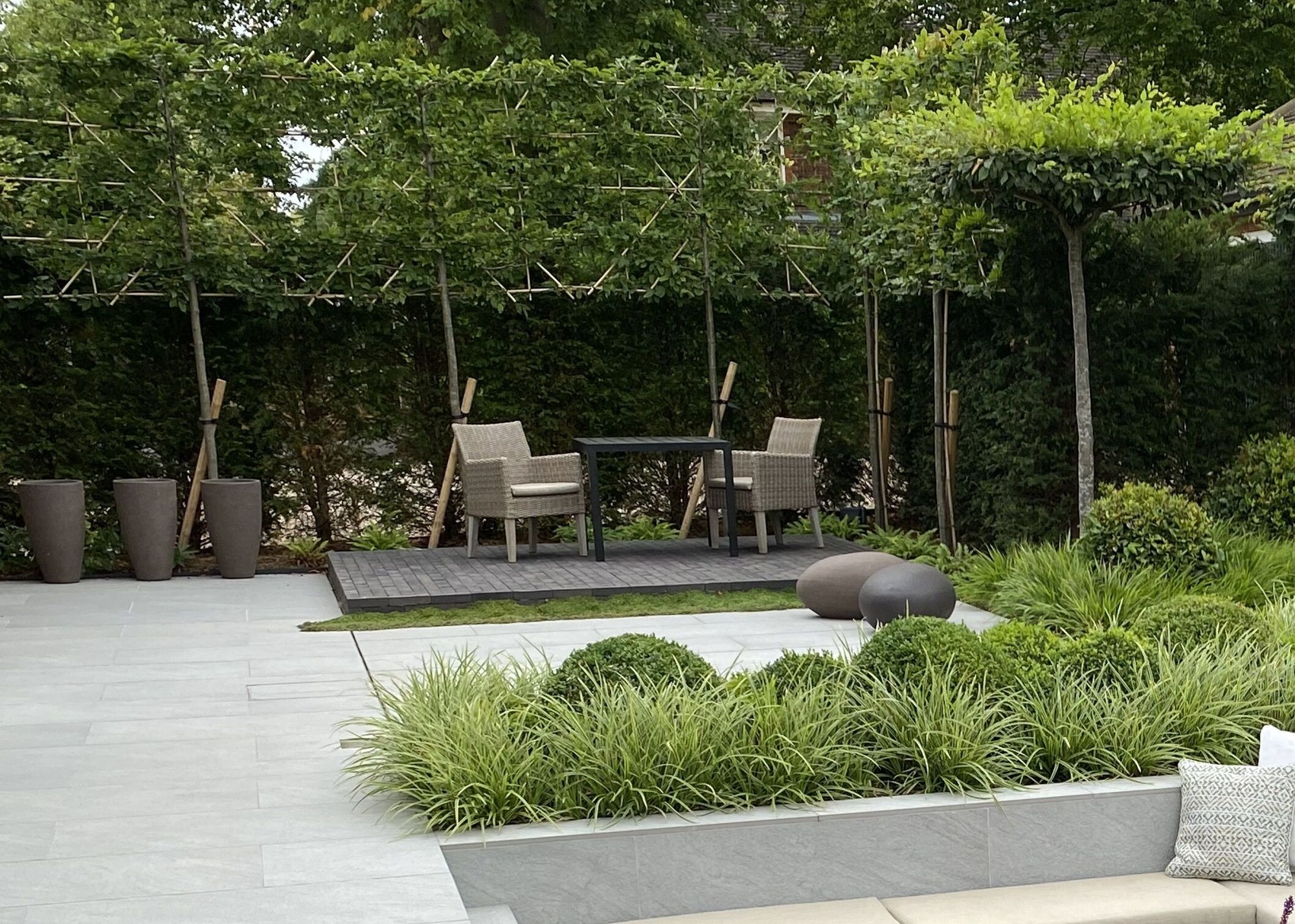
Where you are overlooked by neighboring properties, pleached trees are an elegant way to screen out the view. Trained into shape, so the trunk stays bare and the leaves become a dense form, a row of pleached trees take up little space in front of a fence and look beautiful.
"If you have limited space and don't want to block out too much light, consider planting pleached trees along the boundary, to create an aerial screen, without breaching any planning regulations," says Manoj. "They will prevent inquisitive eyes from prying into your personal space.
"Box-head trees can also be used in the same way, but bear in mind these are expensive. Pleached and cube-head trees suit a modern garden, although you can also used standard trees with a spreading canopy to achieve a similar effect."
7. Grow Bamboo in Low Planters
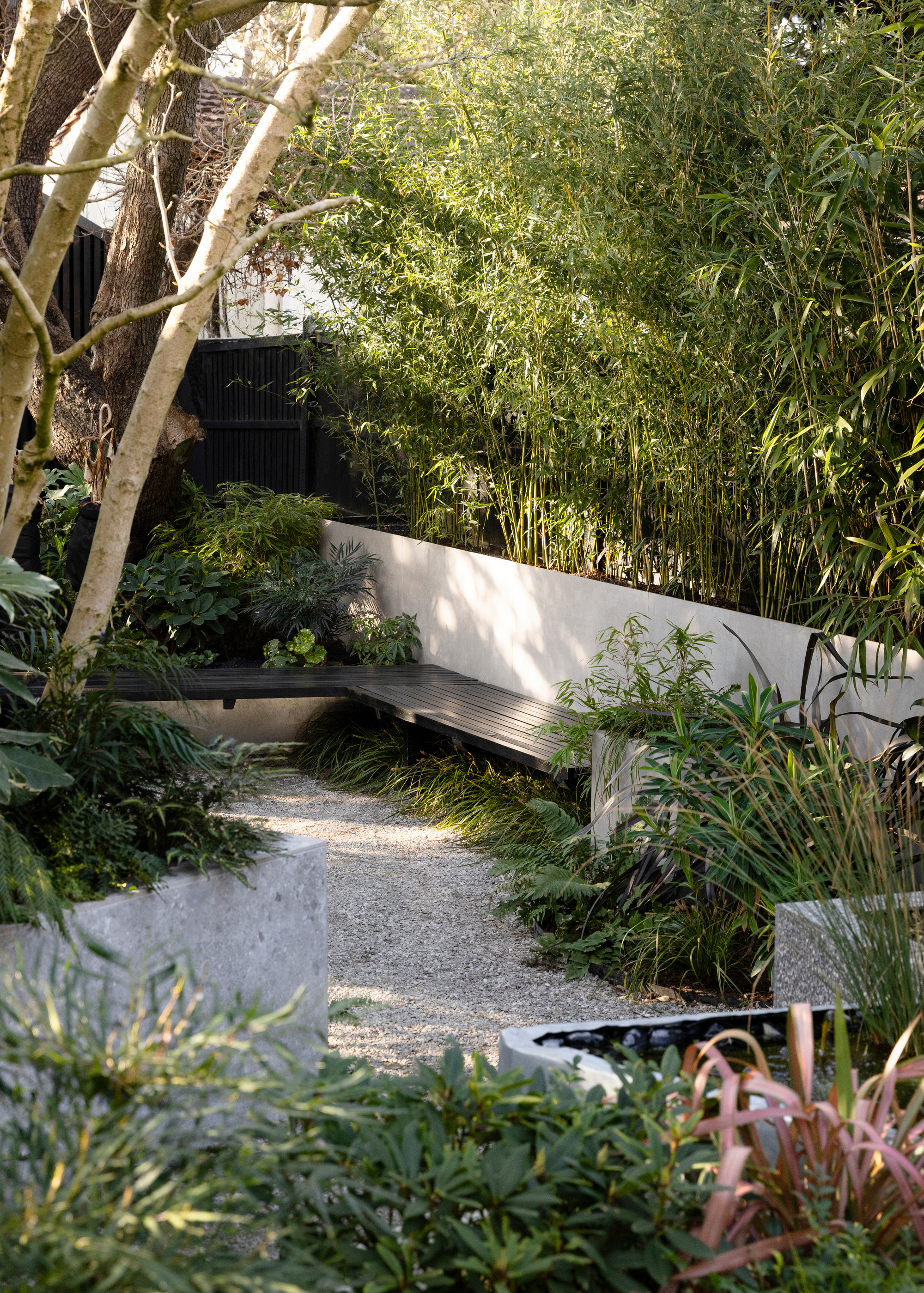
Once loved as a screening idea in modern gardens for its ability to grow fast, bamboo has fallen from favour, due to its invasive growing habits. However, there are bamboo species that are non-invasive, so don't rule it out. Planting bamboo in a low trough or planter, rather than in the ground, will also help to keep it in check, whilst screening out unwanted views or eyesores.
"For a touch of the exotic, plant clumping varieties of bamboo(Fargesia is a great non-invasive choice) to introduce lush greenery," says Gina.
"Creating a sense of privacy in the garden doesn’t mean shutting the world out with tall, blank walls. The best garden screening is all about striking a balance — protecting your space while enhancing its beauty."
8. Opt for Tall Grasses and Perennials
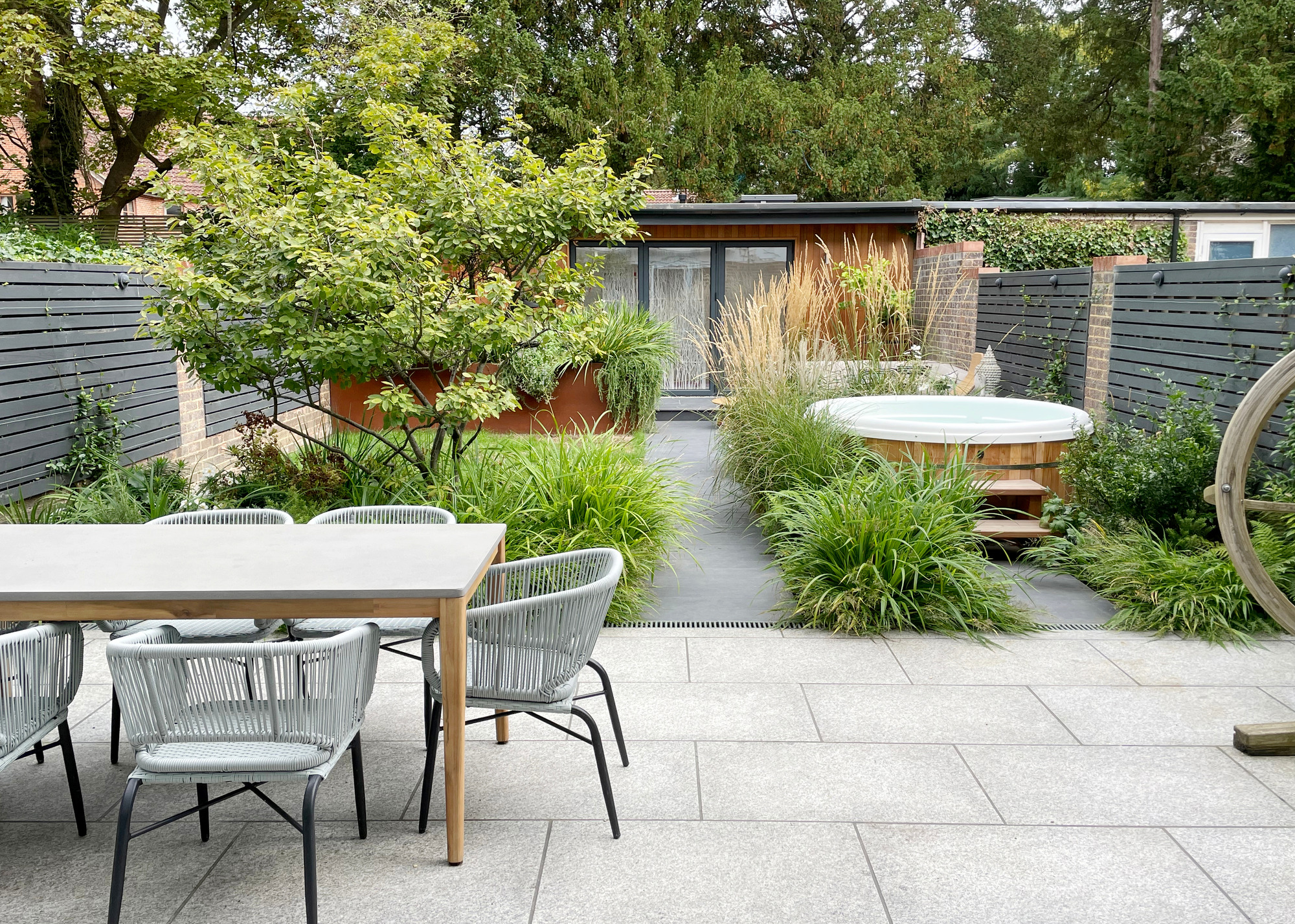
Garden screening ideas can also be used to create a sense of privacy, as much as actual privacy, without completely blocking out a view. This is where tall grasses and perennials can be used to subtly zone different areas of your garden so they feel separate yet still connected.
"If you have a small garden, one of the best ways to make it feel bigger, is to install some screens," says Manoj. "By masking areas, or guiding the direction of travel, screens can create a sense of intrigue, discovery and arrival, tricking the brain into thinking the garden is larger than its actual size.
"Making a screen of tall perennials and grasses of varying heights is a lovely way to surround yourself with colour and texture."
9. Hide Bins With a Fence Panel or Trellis
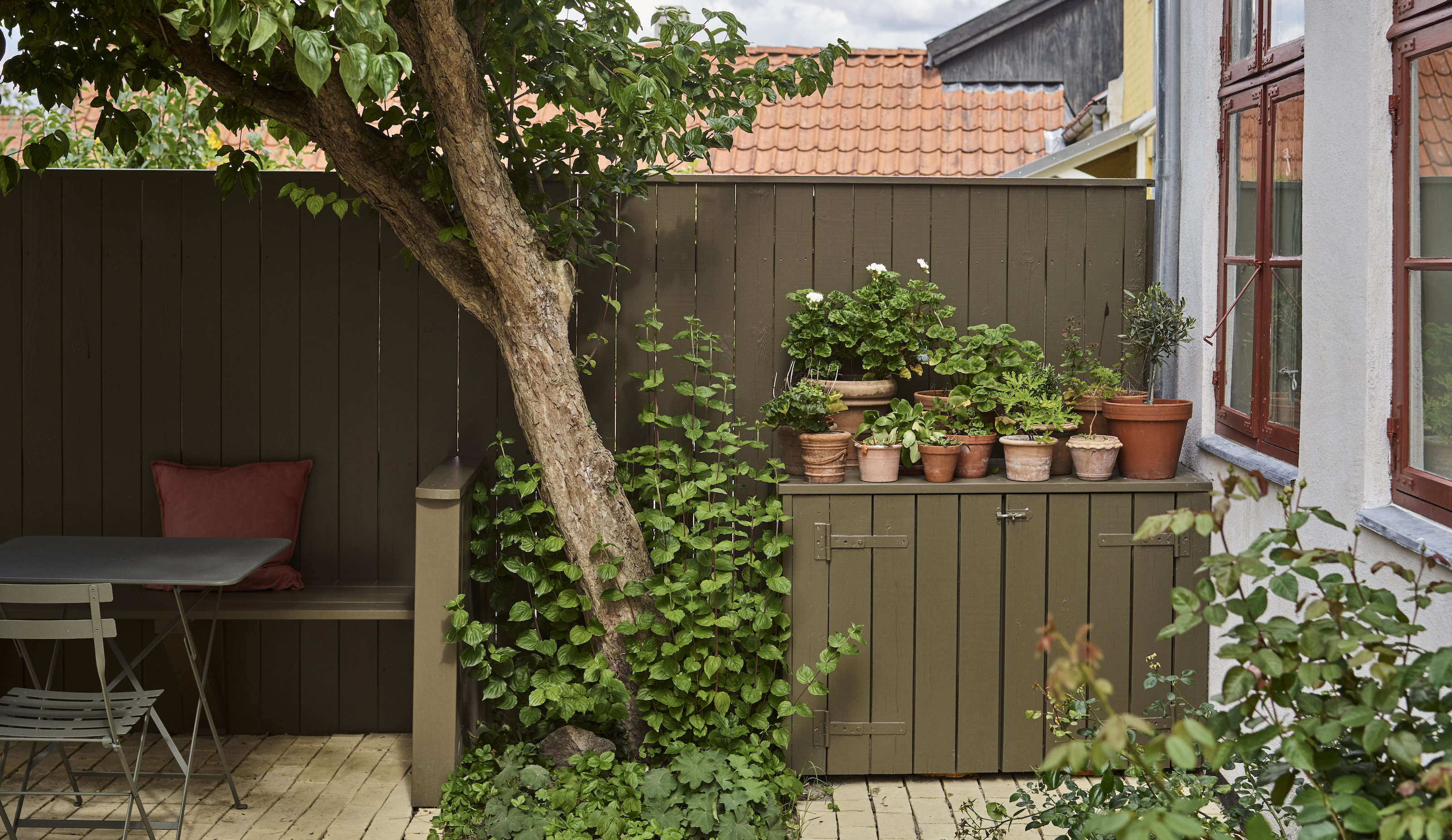
Screening off the practical areas of the garden can make it look more attractive and feel more relaxing to spend time in. Obviously you still need easy access to whatever is behind the screen, so a simple timber panel, or two, is often enough to hide tool cupboards, bins, bags of compost or other garden paraphernalia.
"Panels of cedar slatting can be installed horizontally or vertically, as stand-alone screens, or to hide the shed or compost bins," says Manoj. "Timber trellis panels can be used in the same way, but they look best covered with climbers and vines, or you can train an espalier fruit tree on them."
10. Section an Area With a Hedge
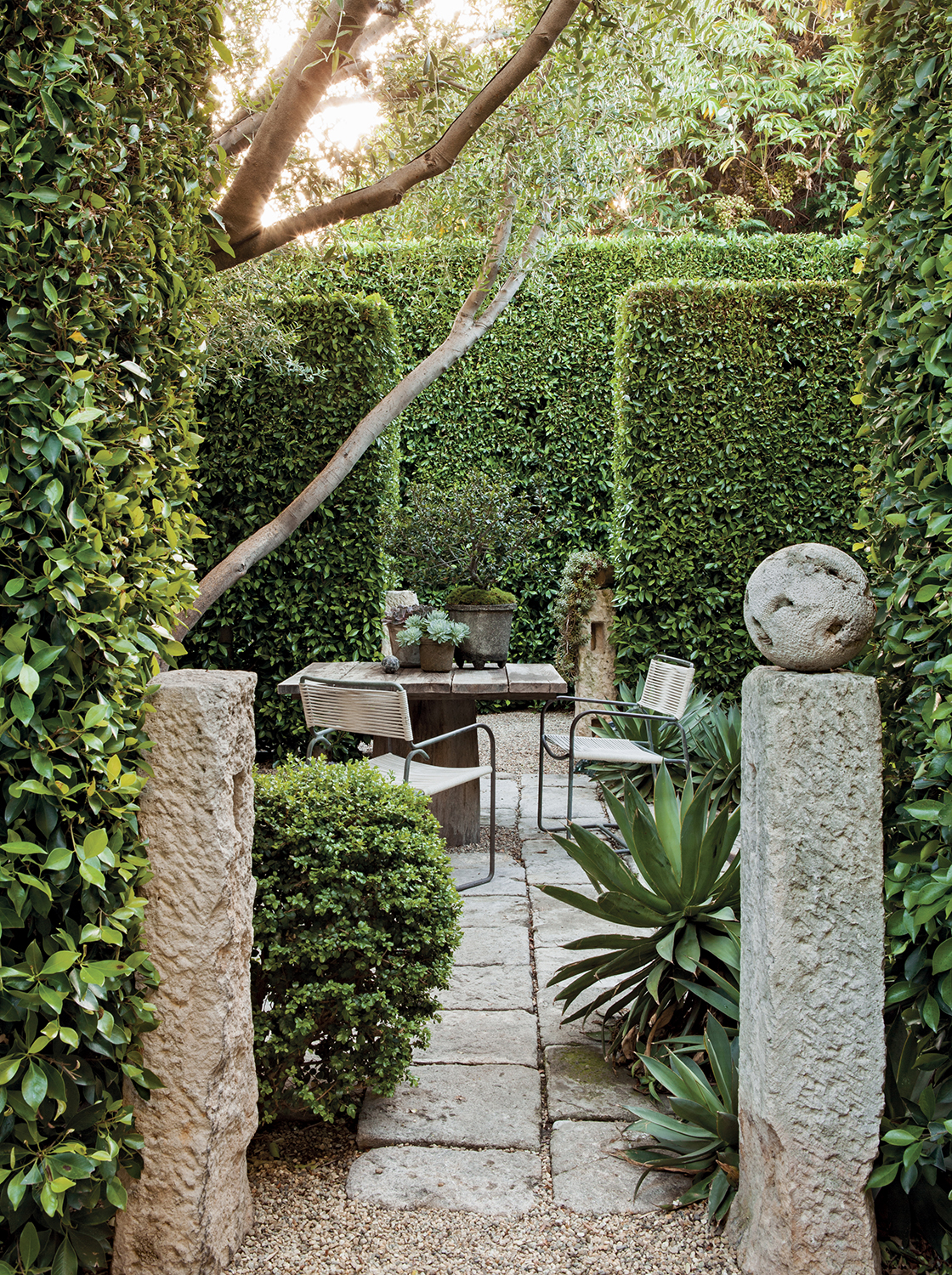
Hedges are not just for property boundaries. Planting a hedge within a garden is another way to section off an area or create a zone around a dining or lounging area. Choose a living privacy fence that will grow to the height you want and keep it pruned, so it stays the right size.
"Hedges will create a green wall to screen an eyesore," says Manoj. "They can also be used to direct your eyes to a focal point such as a stunning piece of sculpture, a beautiful pot, or a specimen tree. A row of trees can create a similar effect in a larger garden."
FAQs
What Is the Most Durable Garden Screening?
Metal screens are extremely durable, particularly those made of steel. However, timber fences can be long-lasting too. Certain types of timber, such as cedar, oak and redwood can last for decades. A mature tree that blocks a view is likely the most durable of all.
There are multiple options and different ways to use screening ideas in your garden–and it is likely you will require more than one. Trees, hedges, grasses and other plants will absorb sound, pollution and rainwater, so can provide multiple benefits beyond simply screening. Whichever ideas appeal, work out your budget first and consider any ongoing maintenance necessary.
Jacky Parker is a freelance lifestyle journalist and writer, producing a wide range of features for magazines and digital platforms. She has written for Livingetc and its sister titles, Homes & Gardens and Country Homes & Interiors for more than 15 years, both as a freelance contributor and as Acting Digital Editor and Acting Style Content Editor, regularly reporting on the latest interiors, gardens and wellness inspiration, speaking to experts in their respective fields, and discovering the best tips.
Jacky has also written for other publications, including Sunday Times Style, The Telegraph, Architectural Digest, House Beautiful, ELLE Decoration, Red, Grand Designs and more.
